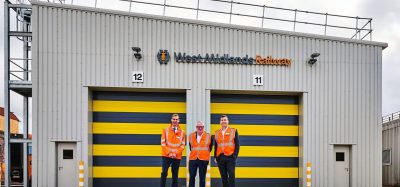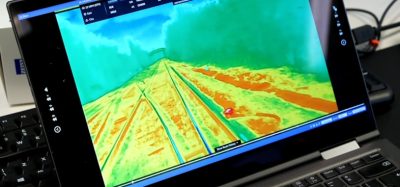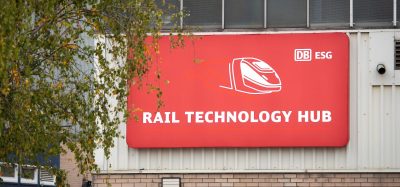Digital optimisation of track maintenance in Hungary
Posted: 1 September 2021 | László Véha | No comments yet
László Véha, Chief Engineer and Expert of Track Engineering within the Track Maintenance Division of MÁV Zrt., explains the benefits of embracing digitalisation in modernising operations when it comes to rail maintenance.
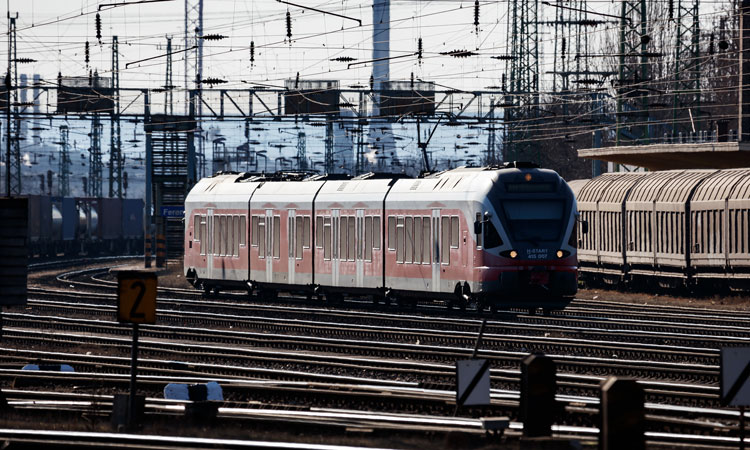

With the rapid development of computing and telecommunications, data transmission and storage capacity is increasing significantly. We would like to exploit this growth in the maintenance of the railway infrastructure operated by our company, which is a complex process with a wide spectrum of input information. The length of the Hungarian railway network is 7,243km, with approximately 12,000 turnouts. There are 692 railway stations. The infrastructure is operated by MÁV Zrt., which is a member of the MÁV-Volán Group. The group consists of 30 companies and 57,000 employees.
In the technical practice of the track infrastructure facilities of MÁV Zrt., we can define the well-known maintenance methods, the IT mapping of which can be imagined in the following three different ways.
1. Operation until failure
This is one of the easiest methods, however, can only be remedied after the fault has occurred, so a complete shutdown may have taken place. It is a particular fault that prevents operation, but still has the possibility to occur during track operation. If possible, we try to avoid it. These include rail breakage in cold weather, short circuit in isolated rail joint etc. in places where forecasting was not possible. Its IT mapping can be interpreted in the form of assessing or eliminating the extent of the disturbance. It would be advisable to use a system that works without human intervention by creating an automatic dispatcher report. However, creating a continuous monitoring system is complicated and costly.
2. Preventive maintenance
This is performed according to a fixed schedule or according to a prescribed criterion, which prevents the failure of a functional structure, system or component in the early state of emerging problems, thus increasing the useful lifetime of the equipment due to ‘right time’ maintenance. This type of maintenance is, for example, rail grinding, which is designed in an expert system, most often timed based on many years of experience and previous procedures. This type of work can be well prepared in time. However, if it is done too early, even uneconomical action can occur. Then comes the main role of diagnostics and analysis of values to be able to postpone our planned intervention, or to do it earlier. This brings us to the next type of maintenance method.
3. Condition-based maintenance
Condition-based maintenance is a preventive approach, as we prepare plans based on the condition of the track and tonnage of vehicles passing through it. Thanks to advanced statistical methods such as machine learning, it is now possible to dynamically interpret preventive maintenance, in which we can perform iteration by examining output options to predict fault‑free operation or fault occurrence within a definable time. Thus, preventive condition-based maintenance predicts future failures by giving the probability of failures, allowing the infrastructure manager to decide on each intervention in its depth based on its operational and economic capabilities.
Our world-class track diagnostic measurement activities provide data on the condition of our railway tracks in Hungary, the multitude and GPS-based accuracy of which is essential for our operation and maintenance strategy.
In this way, we can significantly improve the fault‑free, supervised availability, reliability, punctuality and safety of our railways, while building our cost management strategy. It should be noted that condition-based preventive maintenance requires very large and accurate data due to its statistical methods and the multitude of calculated probable outcomes.
Recording, storing, and managing a wealth and variety of data in high purity and accurate formats are the main pillars of IT systems. In addition to accurate inventory data, we also consider it essential in technical life to have an accurate, GPS‑based map database created with GIS methods, as MÁV Zrt. handles approximately one and a half million objects in space and time.
World-class track diagnostic measurement activities
Our world-class track diagnostic measurement activities provide data on the condition of our railway tracks in Hungary, the multitude and GPS-based accuracy of which is essential for our operation and maintenance strategy. For the diagnostic activity, it is necessary to mention the examination of our railway tracks with a laser gauge measuring device, and the geometrical measurement of the overhead line network with measuring vehicles. According to our plans, we also want to fit our study of digitalised vegetation control along the railway track to this activity.
Among the input data, we come to a delicate issue in which the human eye and human thinking are still essential, which is why its digitalisation is difficult and sometimes subjective. Human on-foot and bridge inspections may be familiar to several infrastructure managers. Human workforce on railway tracks on elevated-speed and high-speed networks without a track closure is virtually impossible, which is why infrastructure managers are looking for solutions to mechanically substitute such tasks, even by having a professional team review image data on optical equipment. Basically, we imagine these machines as our traditional track measuring vehicles equipped with sophisticated camera systems, and in the case of bridges we experiment with drone flights and shots. The recordings obtained are intended to be subjected to digital image processing and reading systems which – on the basis of pre-recorded patterns and input masks – indicate the locations considered as being defective. Our experiments have also begun to develop and use an even more accurate method, similar to the 3D world perception of the eyes of living beings. This is a huge data transfer, storage, processing activity, and a review by a competent technical team is still needed.
As an additional data source, stationary diagnostic systems installed along the railway track can be presented as Internet of Things (IoT) components, which are used on the track network of MÁV Zrt. Although these devices perform vehicle diagnostics such as hot axle box indicator, flat wheel sensor, uneven load distribution sensor, pantograph test, etc. they provide factual data that significantly affect the condition of our railway infrastructure.
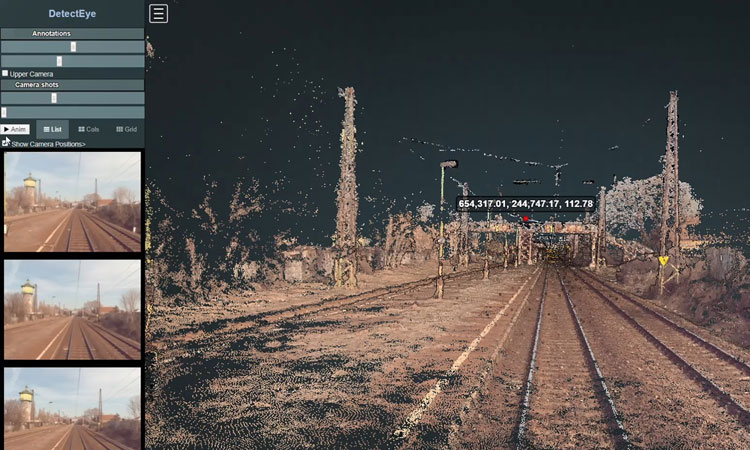

Digital image processing and reading system.
Interpreting data
Information from a multitude of systems must be interpreted in a common interface so that higher-level system modules that summarise the data can receive it, perform operations on their database and master data to provide the results in a list system and graphical interface. The results of track diagnostics are summarised by our advanced expert system of track diagnostics decision support called PÁTER, which is suitable for reporting and within certain limits it can propose types of interventions, intervention schedules and their expected time supported by time- and passed tonnage-based calculations. The results of tests and diagnostics related to bridges, tunnels and engineering structures are processed in the MEDINA system, which means Engineering Diagnostics and Registration Application.
The implementation of the INKA and INKA2 projects is a serious step in the process of modernising the company’s operations…
A task for the future will be to integrate diagnostic data into an even higher-level, soft‑computing design program so that we can break with manual control and recording and speed up the design and coordination procedures.
In 2017 and 2018, one of the largest IT developments in the company’s life took place: INKA (Infrastructure Maintenance System) and INKA2 (Infrastructure and Rolling Stock Maintenance Software and IT Application Consolidation) projects were elaborated. The aim of the projects were to acquire and implement software supporting maintenance processes, to implement IT application consolidation, as well as to regulate the related operational and procedural rules, in addition to the introduction of an integrated and consolidated IT system, supporting its restructured business processes. One of the most important sub-elements of the integrated solution system is the well-known SAP application and its various modules. TIBCO is the interface that provides the common language among existing sub-elements.
The INKA Technical Subsystem is the most important and complex part of the complete solution, which according to the planning ideas ensures a unified, digital register of the railway (MÁV Zrt.) and other related technical data, planning and implementation of maintenance and other technical tasks, its full financial and technical supervision.
In the INKA2 project, among other things, the SAP reporting system is supplemented with an IT solution supporting data warehouse functions (flexible reporting): this means the development of a reporting system that provides up-to-date, authentic data, information at the right time, place, processing, quantity and format, it provides a quick analytical tool in the hands of professional users, assists senior and operational decision management as well as the internal controlling staff in making informed decisions. In addition, it provides orientation assistance and supports capacity planning and the optimisation of the use of resources, thus exploring the necessary structural development opportunities and improving quality.
The implementation of the INKA and INKA2 projects is a serious step in the process of modernising the company’s operations, the benefits of which can be felt by both employees and customers. Our long-term goal for diagnostic systems is to automatically recognise and provide a maintenance planning proposal using neural networks.
We believe that companies choosing the new foundation or the complete transformation and renewal can have an advantage in the construction of effective IT systems. The companies of the MÁV‑Volán Group, including MÁV Zrt., have embarked on a path of renewal in the field of railway digitisation and advanced IT systems.


OUT NOW: The Definitive Guide to Rail’s Digital Future
The rail industry is undergoing a digital revolution, and you need to be ready. We have released our latest market report, “Track Insight: Digitalisation.”
This is not just another report; it’s your comprehensive guide to understanding and leveraging the profound technological shifts reshaping our industry. We move beyond the buzzwords to show you the tangible realities of AI, IoT, and advanced data analytics in rail.
Discover how to:
- Optimise operations and maintenance with real-time insights.
- Enhance passenger services through seamless, high-speed connectivity.
- Leverage technologies like LEO satellites to improve safety and efficiency.
Featuring expert analysis from leaders at Nomad Digital, Lucchini RS, Bentley Systems and more, this is a must-read for any rail professional.
Issue
Related topics
Digitalisation, Track Maintenance Machinery, Track/Infrastructure Maintenance & Engineering




